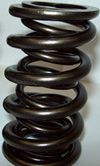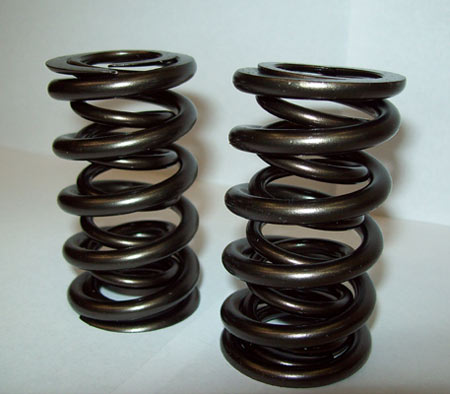Solving the problem of valve spring breakage
 Finding the right valve springs for an inline four-cylinder USAC National Midget engine that makes upwards of 365 hp at the wheels could be a difficult procedure. But, says Erik Milholland, manager of the racing division at Kentucky-based Stanton Racing, "In the last couple of years we've found some really good springs."
Finding the right valve springs for an inline four-cylinder USAC National Midget engine that makes upwards of 365 hp at the wheels could be a difficult procedure. But, says Erik Milholland, manager of the racing division at Kentucky-based Stanton Racing, "In the last couple of years we've found some really good springs."
Stanton Racing fields both Mopar and Toyota Midgets in USAC competition. The company took over the build and rebuild procedures for California-based Toyota Racing Development about three years ago, and since then it has reworked the engine and focused on longevity as well as power.
"A good example of our valvetrain in one of our Toyota engines are the results for Tracy Hines, who went 18 nights on the same set of valve springs," Milholland says. "They came back to us and were down only about 10 lb." Stanton Racing used to have to change the springs after four to six nights due to breakage, and were losing upwards of 30-40 lb, but changed its valvetrain package after the 2009 season. "We fell in with a company that offers a good overall spring - and it all works. They found the magic bullet," Milholland says.
Of course, the mandated 8700 rpm limit for all USAC pushrod Midget engines has also helped keep the valvetrain happy. "We were running 9300 and 9400 rpm, and that was really twisting the springs, because there's a huge difference in harmonics from 8700," he says. "At the same time, we've got customers who get into the rev limiter so hard and for so long that they were getting deflection and other issues. It seems the valve springs are staying a lot more consistent with the lower rpm, more than anything else."
Milholland points out that his company - as with every other National Midget engine builder - is somewhat limited by the outside and inside diameters on the springs. "It all depends on the size and shape of the cylinder head," he explains. At the moment, Stanton Racing uses a double beehive spring with inner damper; it has an outside diameter of 1.500 and inside diameter of 0.790, with coil outside diameter of 0.210 and insider diameter of 0.150. Weight on the valve spring is 145 g, and Stanton is using the same spring for intake and exhaust.
This steel product - steel retainers and seats are also specified - has been through a nitriding process that allows for the kind of wear and fatigue in typical USAC National Midget races, which are held on both asphalt and dirt-track circuits of varying lengths and preparation. "We rely on the manufacturer for consistency of the material," Milholland says. "We don't have a good way of analysing material consistency here; our focus is on spring tension."
When a typical USAC National Midget engine is built, spring tension starts at about 270 lb of pressure on the seat and may soften by about 10 lb before rebuild, after ten to 14 races. "It's really inconsequential," Milholland says. "We use an install height of around 2 in installed at 270 lb open; our camshaft package will be open at around 800 lb, actually in the area of 795-805 lb."
Stanton Racing finishes the ends of the valve springs itself. "We've got a little procedure we go through as far as trimming the ends off them. We use a high finish sanding cone, maybe 400 grit or so, to finish them before insertion," Milholland says.
Cooling is accomplished through spray procedures. "It's a bit different for the Mopar and the Toyota designs," he says. "Some of the Toyota designs have oilers through the valve covers, and others come through the rocker arms. We're spraying them, one way or the other, but it's a different design philosophy for the Toyota and Mopar engines."

Before Stanton Racing came up with its current package, it was breaking springs and needed to find products that would last. For the past couple of years, none of those problems have been evident.
"We used to worry about softening of our springs - that's the only type of wear we experience, aside from breakage - which we haven't had since we put our new package together," Milholland says.
At the final race of the USAC National Midget season, the 71st annual Turkey Night Midget Grand Prix at Toyota Speedway in Irwindale, California, Midget engines prepared by Stanton Engines held the night. Its Toyota engines set fast times with a new track record and won the race. And no, there were no valve spring issues.
Fig. 1 - Stanton Racing uses the same valve springs for intake and exhaust on its National Midget engines (Photo: Erik Milholland)
Written by Anne Proffit